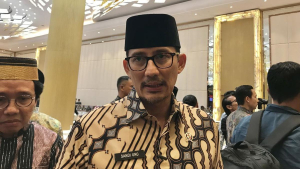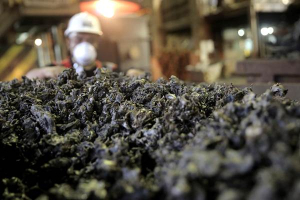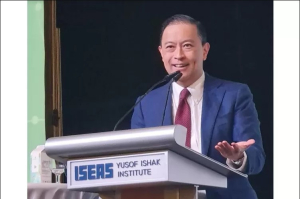Ministry advances towards establishing robust solar panel ecosystem in Indonesia
Published on 05/04/2024 at 07:01 GMT+7 Reading time
Coordinating Ministry for Maritime Affairs and Investment has revealed that Indonesia is currently advancing its efforts from upstream to downstream phases in establishing a robust solar panel ecosystem.
During the Kickoff event for the Decarbonization Roadmap of the Nickel Industry in Jakarta on Wednesday, April 3, 2024, Tubagus Nugraha, Assistant Deputy for Mining at the Coordinating Ministry for Maritime Affairs and Investment, highlighted Indonesia's significant potential in the solar energy sector.
"The power capacity potential from solar panels in Indonesia reaches a staggering 207 Gigawatts per year," Nugraha stated.
The development of this value chain encompasses various stages, including raw material mining, polysilicon manufacturing, wafer production, solar cell and solar module manufacturing, solar system integration, and the incorporation of renewable energy.
Indonesia boasts abundant raw material resources essential for solar panel production, such as quartz stone, zinc ore, and nickel ore.
According to data from the Coordinating Ministry for Maritime Affairs and Investment, Indonesia possesses vast reserves, including 211.8 billion tons of quartz stone, 700 million tons of zinc ore, and 9.4 billion tons of nickel ore.
These raw materials will undergo processing to produce essential components of solar panels, including polysilicon, wafers, solar cells, and solar modules. These components will be integrated into Solar Power Generation Systems (PLTS), comprising modules, inverters, and Balance of System.
Particularly regarding nickel ore, a crucial raw material for solar panels,the ministry noted its distribution across seven provinces in Indonesia. The largest reserves are found in Southeast Sulawesi, North Maluku, and Central Sulawesi.
The Indonesian government has issued 330 Mining Business Licenses (IUPs) for nickel across the archipelago. Mined nickel ore will be processed in 147 smelters owned by 137 companies.
Earlier, Coordinating Minister for Maritime Affairs and Investment, Luhut Binsar Pandjaitan, announced a substantial investment influx into North Kalimantan for solar panel development. Investments worth US$3.5-4 billion, focusing on photovoltaic glass, are set to revolutionize solar energy in the region.
This commitment was secured by Septian Hario Seto, Deputy for Investment and Mining Coordination at the ministry, during his visit to China. Seto engaged with one of the world's largest solar panel raw material producers during his official trip to Shanghai, China.
China, the global leader in solar power capacity, reached a monumental total of 253.8 GW of Solar Power Generation Systems (PLTS) in 2020, setting a benchmark for renewable energy adoption worldwide.
Tag
Already have an account? Sign In
-
Start reading
Freemium
-
Monthly Subscription
30% OFF$26.03
$37.19/MonthCancel anytime
This offer is open to all new subscribers!
Subscribe now -
Yearly Subscription
33% OFF$228.13
$340.5/YearCancel anytime
This offer is open to all new subscribers!
Subscribe now






